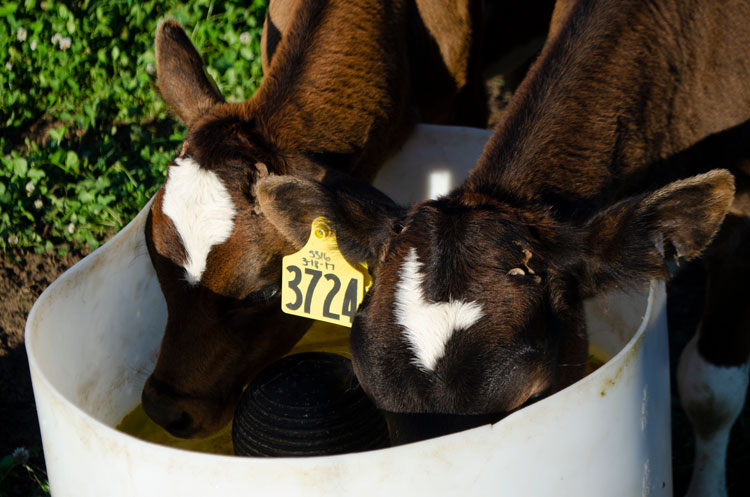
Through research and practical experience, we continue to learn more about the benefits of social housing for young dairy calves. There’s proof that social contact is desirable from the calf’s perspective, too.
In the July Hoard’s Dairyman webinar, Emily Miller-Cushon, an associate professor at the University of Florida, talked about calves and group housing. She said research has shown that individually housed calves will work to achieve access to a social companion, and that grouped calves will chose to spend more time with familiar social companions.
This is true even when calves are eating. In a study by Miller-Cushon, half the calves were housed individually prior to weaning, while the other group was housed in pairs. After weaning, all calves were put into pairs.
Two weeks later, a barrier was placed in the pen to create two feeding stations. A calf could either choose to eat from a bucket next to its pen mate or it could eat alone. In the next phase of the study, the second bucket was removed. The calf could eat with its buddy from the same bucket or eat alone from its own bucket. Interestingly, well over half of the time, the calf chose to eat with its friend — even if it had to share the bucket.
The calves that were previously housed individually chose to eat with a partner about 60% of the time; for the calves housed in pairs from the start, it was over 75% of the time. Miller-Cushon noted that these responses make sense given the social bonds calves form, and it might suggest that the preference for social feeding may be greater in calves that are raised socially.
That being said, feeding in group situations has pros and cons. “The effect of social contact on feeding behavior is a real benefit of social housing, but it does provide some issues that have to be effectively managed,” Miller-Cushon explained.
She said that social contact early in life raises calves’ willingness to eat novel feed and stimulates solid feed intake overall. The sight of another calf eating may encourage a resting calf to get up and eat as well. This desire to eat together can also be a hinderance, though.
“Because calves want to eat together, competition can be a problem,” she said. “We see that when we start to restrict feeding spaces per calves.” She explained that expanding the number of calves per feeder can cause faster rate of intake, longer wait times for access to the feeder, and more frequent displacements or disturbances at the feeder.
Miller-Cushon said that despite these behaviors that result due to competition at the feeder or feedbunk, we are finding that calves still try to eat together. This can lead to reduced milk intake and supports the need for more nipples per pen or fewer calves per feeder.
To learn more about calf rearing and Miller-Cushon’s research, watch the archived webinar “Calf management, behavior, and welfare” on our website. This webinar was sponsored by Agri-Plastics.








